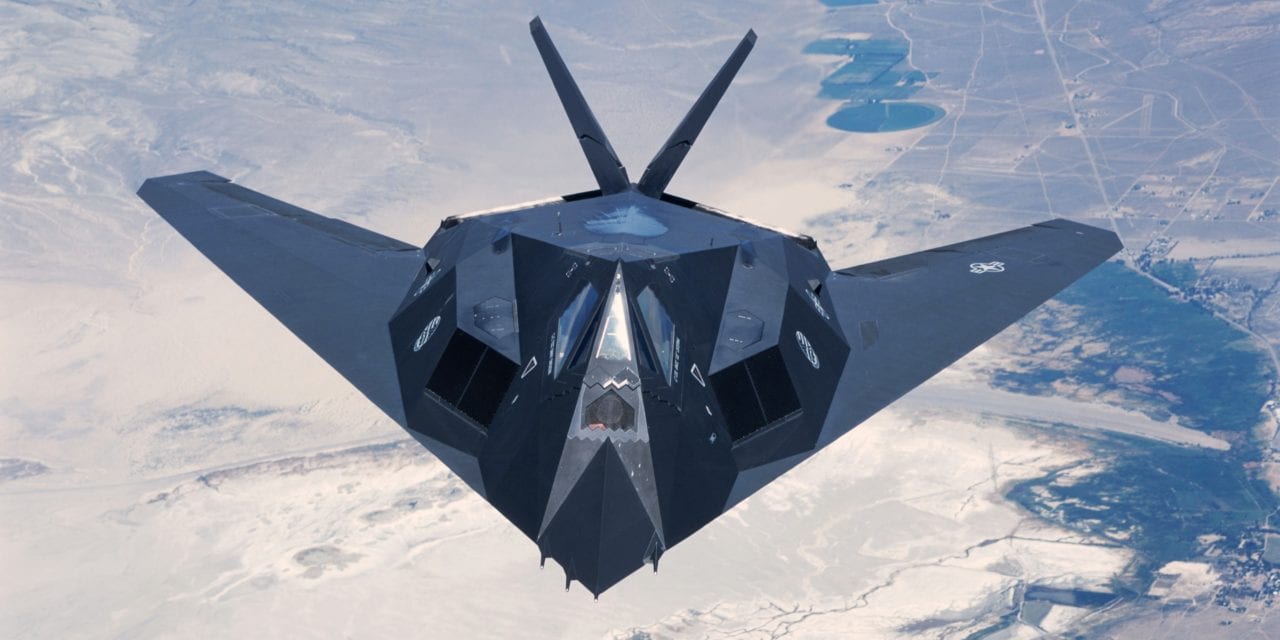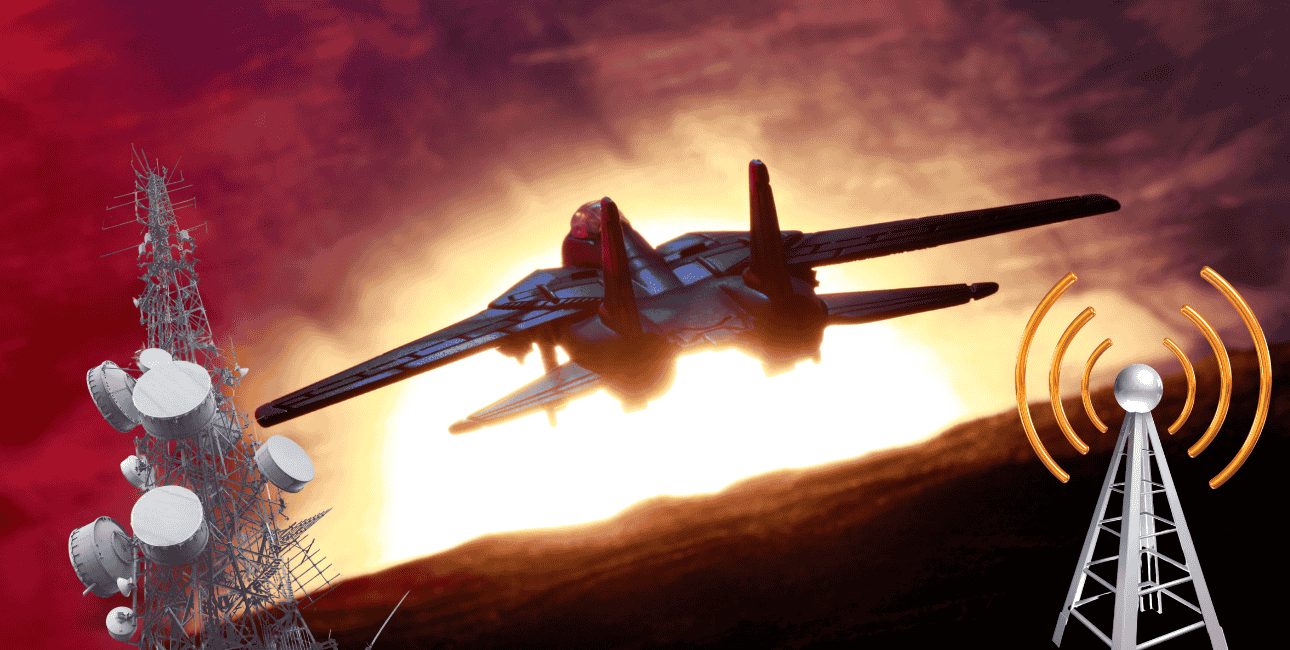In March 2025, Boeing’s F-47, the U.S. Air Force’s highly secretive Next-Generation Air Dominance (NGAD) fighter concept, was unveiled. It showcased advanced stealth capabilities and the ability to collaborate with drones.
Simultaneously, the U.S. Navy is on the verge of selecting a contractor for its next-generation carrier-based stealth fighter program, the F/A-XX, which could potentially shift the global military balance.
In December 2024, China unveiled the J-36, a tailless, sixth-generation fighter jet characterized by its ultra-stealth capabilities. This design enhances stealth and aerodynamic efficiency for long-range missions, signifying a significant shift in aerial dominance towards China.
China has also demonstrated significant progress in counter-stealth technologies. Satellite imagery from late 2024 indicates China is constructing a counter-stealth radar system on Triton Island in the South China Sea.
This system is expected to enhance China’s surveillance capabilities, potentially challenging the operational effectiveness of stealth aircraft in the region.
Reportedly, Chinese military scientists have developed a novel stealth material capable of defeating anti-stealth radars. Laboratory tests reveal that this ultra-thin coating can effectively absorb low-frequency electromagnetic waves from multiple angles, a feat previously considered unattainable.

These developments underscore a global emphasis on advancing stealth capabilities and counter-stealth measures, reflecting the urgent and competitive nature of modern military technology.
Stealth technology has transformed air warfare. It enables aircraft to evade detection by radar, infrared, and other sensors, allowing them to operate deep within contested airspace. Since its introduction, stealth has provided a significant tactical advantage, reshaping military strategies and doctrines.
However, this advantage has not gone unchallenged. Counter-stealth technologies have emerged to detect and neutralize stealth aircraft, creating a dynamic, ongoing competition. With the advent of sixth-generation air warfare, this battle is poised to escalate, driven by cutting-edge innovations on both sides.
Evolution Of Stealth Technology
Stealth technology, often termed “low observable technology,” minimizes an aircraft’s detectability by reducing its radar cross-section (RCS), infrared signature, and acoustic emissions.
Its origins trace back to World War II with rudimentary efforts like camouflage, but it gained prominence in the late 20th century.
The Lockheed F-117 Nighthawk marked a breakthrough. Its angular, faceted design scattered radar waves, while radar-absorbent materials (RAM) absorbed them, significantly reducing its RCS. The F-117’s success during the 1991 Gulf War underscored stealth’s potential, penetrating Iraqi defenses undetected to deliver precision strikes.
Subsequent advancements refined stealth capabilities. The Northrop Grumman B-2 Spirit, a flying wing design, eliminated sharp edges and incorporated advanced RAM, achieving an even smaller RCS.

By the early 2000s, fifth-generation fighters like the Lockheed Martin F-22 Raptor and F-35 Lightning II integrated stealth with combat versatility. The F-22 features a sleek, aerodynamic shape, internal weapon bays to avoid protrusions, and coatings that dampen radar returns.
The F-35 enhances this with sensor fusion, networking capabilities, and reduced infrared signatures through engine design. These aircraft exemplify stealth’s evolution from a specialized feature to a core attribute of modern fighters, blending low observability with supercruise, advanced avionics, and multirole functionality.
The technology hinges on several principles: shaping to deflect radar waves, materials like RAM or composites to absorb energy, and electronic countermeasures to mask emissions. However, stealth is not invisibility; its effectiveness depends on the opponent’s detection capabilities, setting the stage for counter-stealth advancements.
Current Counter-Stealth Measures
As stealth technology matured, adversaries developed methods to detect these elusive aircraft, exploiting their residual signatures.
One prominent approach is using low-frequency radars like VHF or UHF bands. Unlike the high-frequency radars (X-band) that stealth designs counter, low-frequency systems detect larger structural shapes, bypassing some stealth optimizations.
Russia’s Nebo-M radar, for instance, operates in these bands, potentially spotting stealth aircraft at longer ranges. However, their lower resolution limits targeting accuracy, requiring integration with other systems.
Infrared Search and Track (IRST) systems offer another countermeasure, detecting heat signatures from engines or airframe friction. Modern fighters like Russia’s Su-35 employ IRST to track stealth aircraft, especially during afterburner use when infrared emissions spike. Stealth designs mitigate this with exhaust shielding and cooling, but complete suppression remains challenging.
Passive radar systems represent a third avenue. These use ambient electromagnetic signals to detect disturbances caused by an aircraft’s passage. Systems like China’s DWL002 exploit this principle, offering a stealth-resistant, hard-to-jam alternative to active radar. Networked sensors enhance this capability, combining data from multiple sources to pinpoint anomalies.
Despite these advances, counter-stealth faces hurdles. Low-frequency radars struggle with clutter and precision, IRST is range-limited and weather-dependent, and passive systems require sophisticated processing to filter noise.
For now, false positives and integration challenges further complicate their deployment, ensuring that stealth retains an edge.
The Stealth vs. Counter-Stealth Dynamics
Sixth-generation fighters, currently under development, promise to elevate this contest. Programs like the U.S. Next Generation Air Dominance (NGAD), Europe’s FCAS, and GCAP aim to redefine air warfare with advanced stealth and counter-stealth innovations.
Stealth Advancements: Sixth-generation stealth may transcend current designs. Metamaterials, engineered structures with unique electromagnetic properties, could dynamically adapt to incoming radar waves, reducing RCS beyond what static RAM achieves.
Research into adaptive camouflage might minimize visual and acoustic signatures, blending aircraft into their surroundings. Enhanced infrared suppression, possibly through novel cooling systems or exhaust shaping, could further mask heat emissions.
Integration with Other Technologies: Other emerging technologies amplify stealth’s role. Optionally manned or unmanned configurations, as envisioned in NGAD, allow riskier missions without pilot exposure.

“Loyal wingman” drones, networked with manned fighters, could extend sensor reach or act as decoys, preserving stealth by misdirecting detection efforts. Directed energy weapons, like lasers, might replace traditional munitions, reducing protrusions and maintaining a low profile. These advancements aim to keep stealth aircraft ahead of evolving threats.
Counter-Stealth Advancements: Counter-stealth technologies are equally ambitious. Quantum radar, leveraging quantum entanglement, could detect stealth aircraft by analyzing subtle disturbances unreadable by conventional systems.
Though experimental, its theoretical range and precision threaten current stealth paradigms. Using dispersed transmitters and receivers, multi-static radar networks exploit reflections that monostatic radars miss, challenging shape-based stealth designs.
Artificial intelligence (AI) and machine learning enhance detection by analyzing vast sensor data, radar, infrared, and acoustic signals to identify patterns indicative of stealth aircraft.
China’s advancements in networked sensors, integrating space-based platforms and ground systems, exemplify this approach.
High-altitude drones or satellites could also monitor large areas, reducing the stealth’s ability to hide in clutter. These developments suggest a future where no aircraft remains truly undetectable.
Strategic Dynamic in Context: Specific programs illustrate this duality. The U.S. NGAD emphasizes stealth supremacy, pairing manned fighters with autonomous drones. Europe’s FCAS prioritizes system-of-systems integration, potentially balancing stealth with counter-detection capabilities.
China’s approach hints at advanced stealth and quantum-based counters, reflecting a dual-track strategy. This global race ensures that sixth-generation warfare will hinge on the stealth-counter-stealth balance.
Strategic Implications & Future Trends
The interplay between stealth and counter-stealth reshapes military strategy. If counter-stealth gains parity, stealth’s cost, billions per aircraft, may outweigh its benefits, prompting a pivot to speed, electronic warfare, or expendable drones.
The F-35, costing nearly US$100 million per unit, exemplifies this investment; effective detection could render such platforms vulnerable, shifting budgets toward countermeasures or alternative systems.
Tactically, a robust counter-stealth environment might force reliance on stand-off weapons, beyond-visual-range engagements, or networked operations with unmanned assets.
Electronic warfare, jamming enemy sensors, could complement stealth, maintaining an edge even as detection improves. Conversely, if stealth outpaces counters, air superiority will favor nations with advanced fighters, reinforcing doctrines built around penetration and surprise.
Geopolitically, the U.S. seeks to preserve stealth dominance, while China and Russia invest in counter-stealth to challenge it. This rivalry drives innovation but risks escalation as each side counters the other’s advances.
Future trends may see cyber warfare targeting stealth and counter-stealth systems, exploiting their reliance on software. Space-based sensors could tilt the balance toward detection, while AI-driven autonomy might redefine engagement rules.
The battlefield will grow more complex, with stealth and counter-stealth as pivotal elements in a networked, multi-domain conflict.
Conclusion
The contest between stealth and counter-stealth is a cornerstone of air warfare’s evolution. From the F-117’s debut to the sixth-generation horizon, stealth has driven tactical innovation, countered by increasingly sophisticated detection methods.
As programs like NGAD take flight, this battle will intensify, blending advanced materials, AI, and quantum technologies.
Its outcome will dictate air combat’s future, shaping strategies, budgets, and global power. Neither side will claim absolute victory soon; their mutual advancement ensures a perpetual race, defining sixth-generation warfare and beyond.
- Air Marshal Anil Khosla is a former Vice Chief of Air Staff (VCAS) of the Indian Air Force and AOC in C of Eastern Air Command.
- VIEWS PERSONAL OF THE AUTHOR
- He tweets at: @AnilKhosla16




